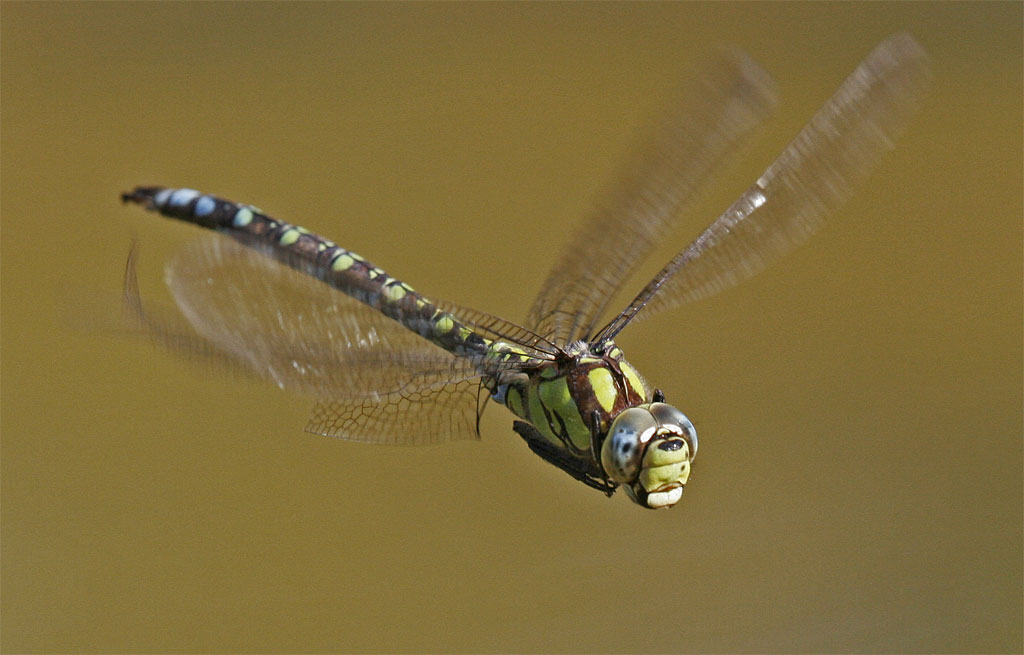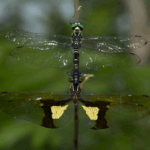In Britain the Southern Hawker can usually be seen on the wing from mid June to mid October. The female lays her eggs in summer and early autumn by stabbing her ovipositor into rotting decaying marginal vegetation or rotting wood. The eggs lie dormant through the winter and then hatch in the following spring.
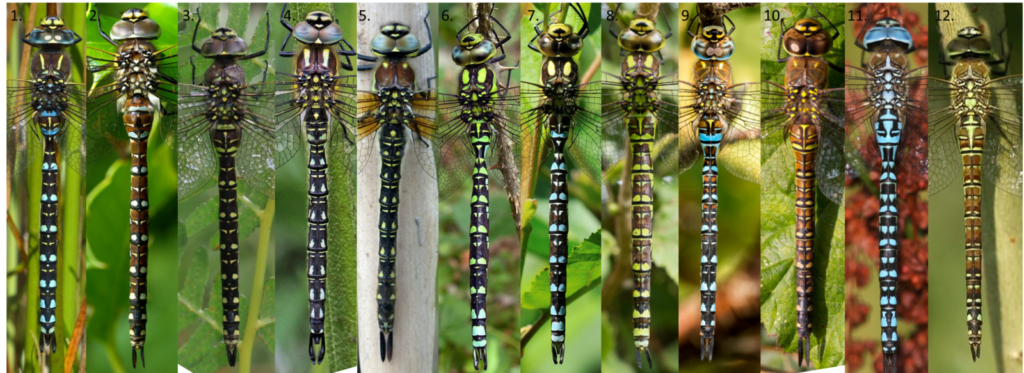
Southern Hawker nymphs take three years to reach maturity, during which time they feed on small invertebrates including the nymphs and larvae of other insects as well as tadpoles and, when they can catch them, newborn newts (known as efts).
southern hawker dragonfly life cycle & Habitat facts
From June to October, the males aggressively defend their hunting and breeding grounds against other males. Once they have successfully mated, the females lay their eggs (oviposit) on the edge of still or slow flowing water, often in rotting wood or other vegetation. Nymphs then hatch out of the egg and spend two to three years in the water developing into an adult, during this time, the nymphs feed on small tadpoles, aquatic insects, and small fish. After the two to three year period, nymphs will climb up vegetation that sticks out of the water and shed their skin. This change turns the nymphs into adults and gives them their wings and final colouration. This often occurs from June to late July.
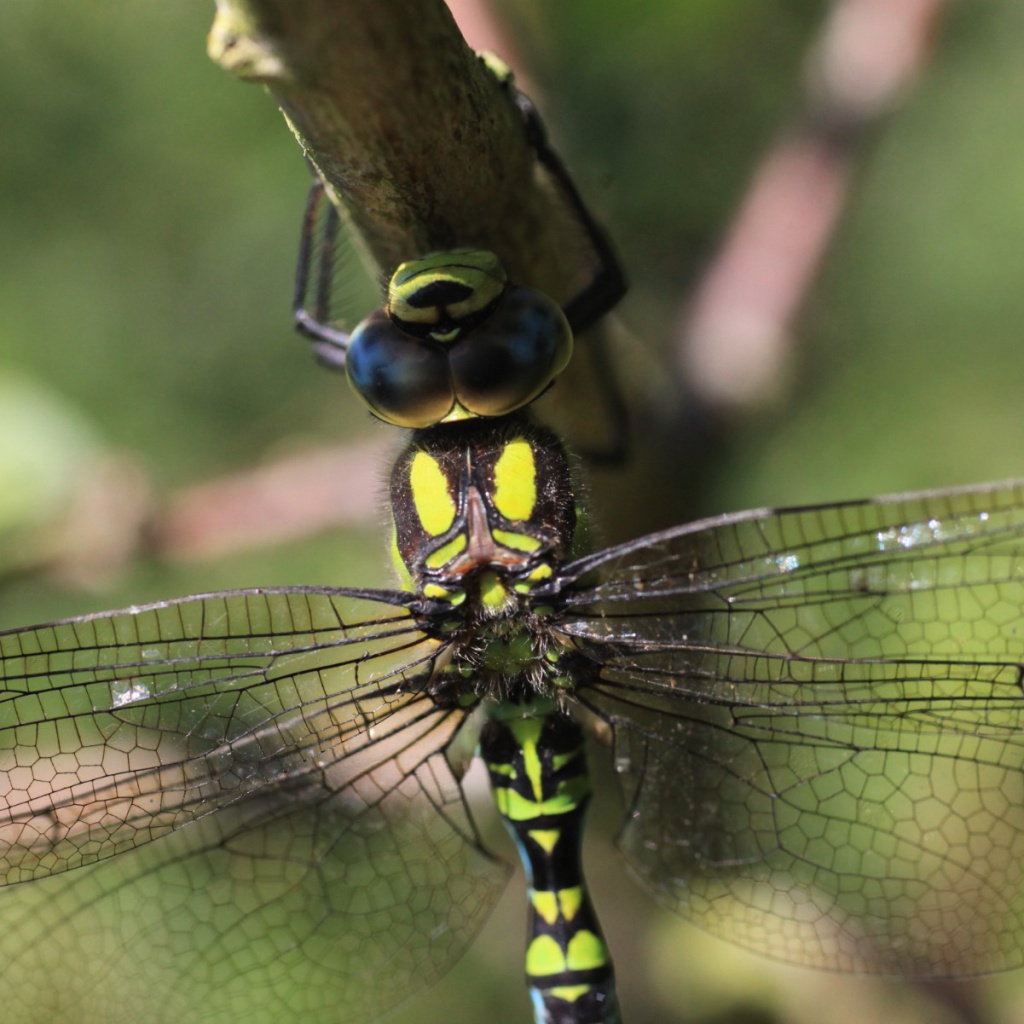
The species is one of the most common and most widespread dragonflies in Europe. The range in the Western Palearctic covers a large part of Europe, to Scotland and southern Scandinavia in the north and to Italy (without the southwest) and the northern Balkans in the south); the eastern boundary is formed by the Urals and the western by Ireland. It is also found in northwest Africa (Algeria). In Central Europe the species is very common.
Habitat
These dragonflies mainly inhabit well-vegetated, small ponds and garden ponds, but they wander widely, and they are often seen in gardens and open woodland.
Prefers non acidic waters. Breeds in water line vegetation in well-vegetated, small ponds, often in garden ponds. Hunts well away from water and may be found hawking woodland rides well into the evening.
A large, inquisitive Hawker usually seen individually.
Male: dark with blue and green markings.
Female: brown with green markings.
| Larval Information | Hawkers have a long streamlined body-shape.38-48mmThin mask (more that 3.5x long than wide). |
|---|---|
| Similar Species | Similar in appearance to other Hawkers. Can be distinguish by its colouration and its broad, strongly coloured ante-humeral stripes on the back of the thorax. |
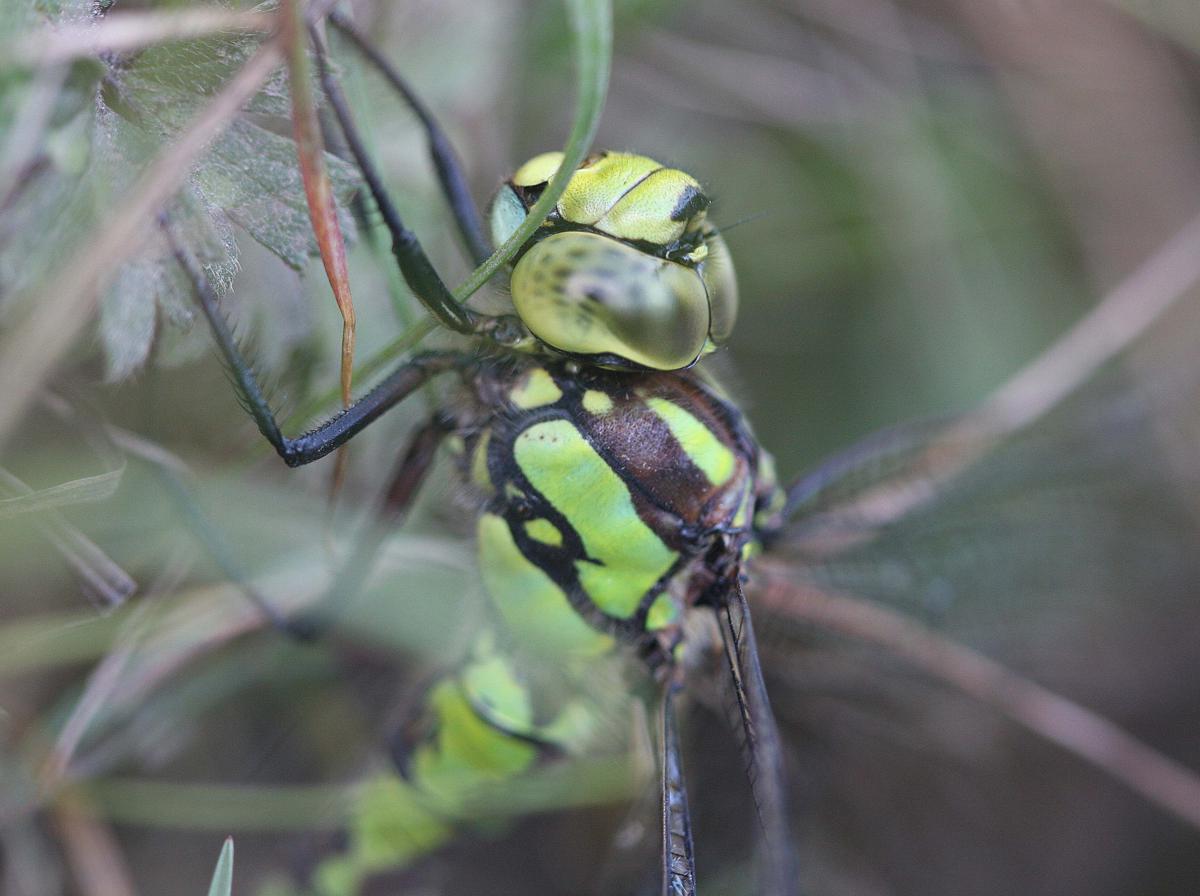
| Adult Identification | Length: 70mmBroad, bright ante-humeral stripes on the back of the thorax.Dark wing veins and (pterostigma) wing spots.Elongated triangular mark on segment 2 near the top of the abdomen.Male: dark with bright green and blue markings. Rare blue form only has blue markings.Female: brown with bright green markings.Very inquisitive dragonfly that will often come close. |
|---|
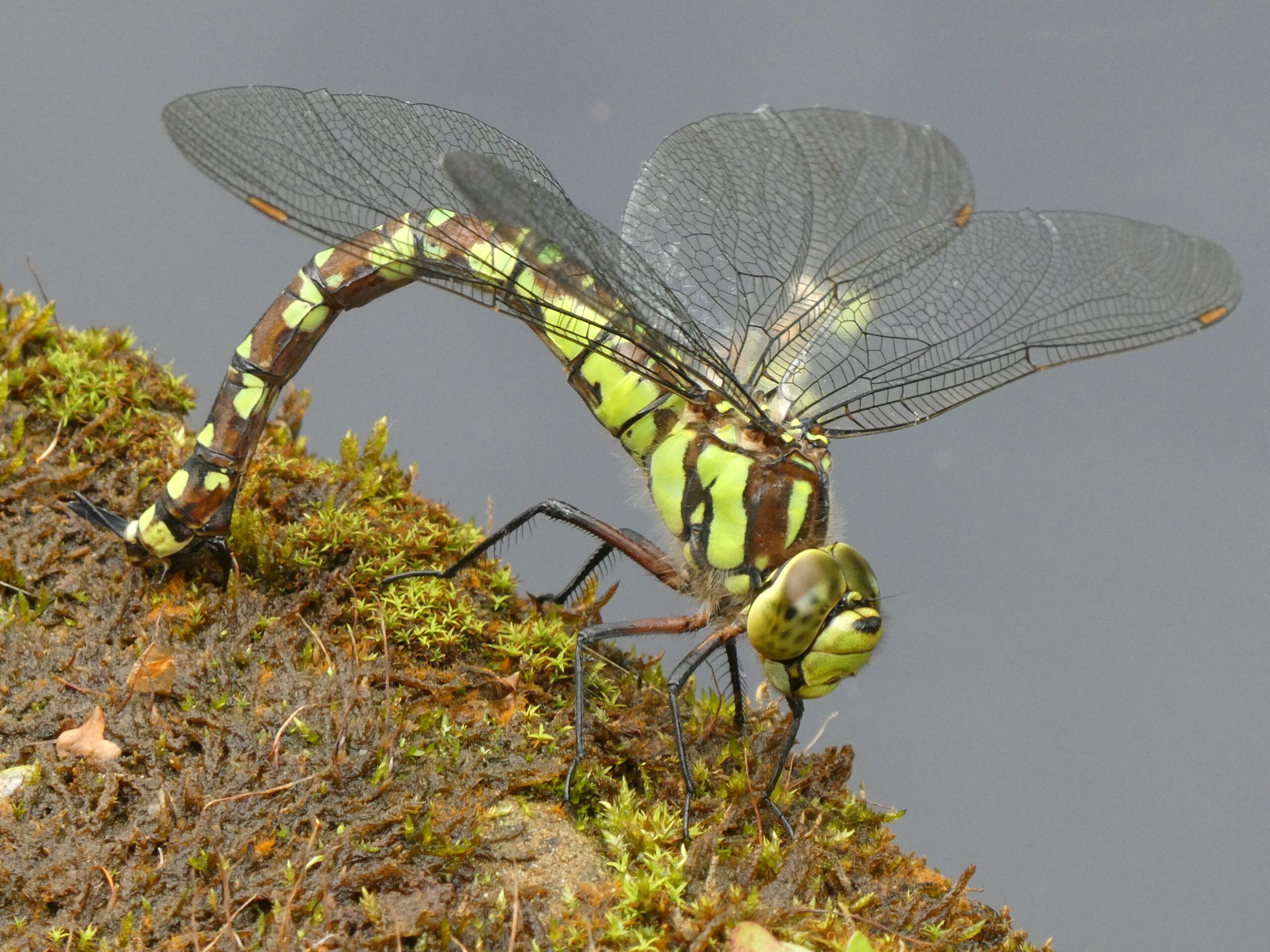
How to identify
The Southern hawker is mostly black in colour. The male has lime green spots all along the body, pale blue bands on the last three segments of the abdomen, blue-green eyes, and large green patches on the thorax. The female is paler, with pale green spots and brownish eyes. The black-and-blue hawkers are a tricky group of dragonflies to identify. The Southern hawker can be recognised by its lime green, rather than blue, spots and the large pale patches on its thorax.
What do they look like?
Southern Hawker dragonflies can be as long as 70 millimetres and have a wingspan of up to 110 millimetres. The males are dark with bright blue and green markings, and have blue or greenish-blue eyes. There have been males recorded that only have blue markings, but these are rare. The female dragonflies are brown with bright green markings and have brown or yellow-green eyes.
Where do they live?
Southern Hawkers can be found around ponds, canals, and lakes in the lowlands. They prefer non-acidic waters, often breeding in bodies of water lined with lots of vegetation. The adults hunt well away from water and can be found searching for prey in woodlands.
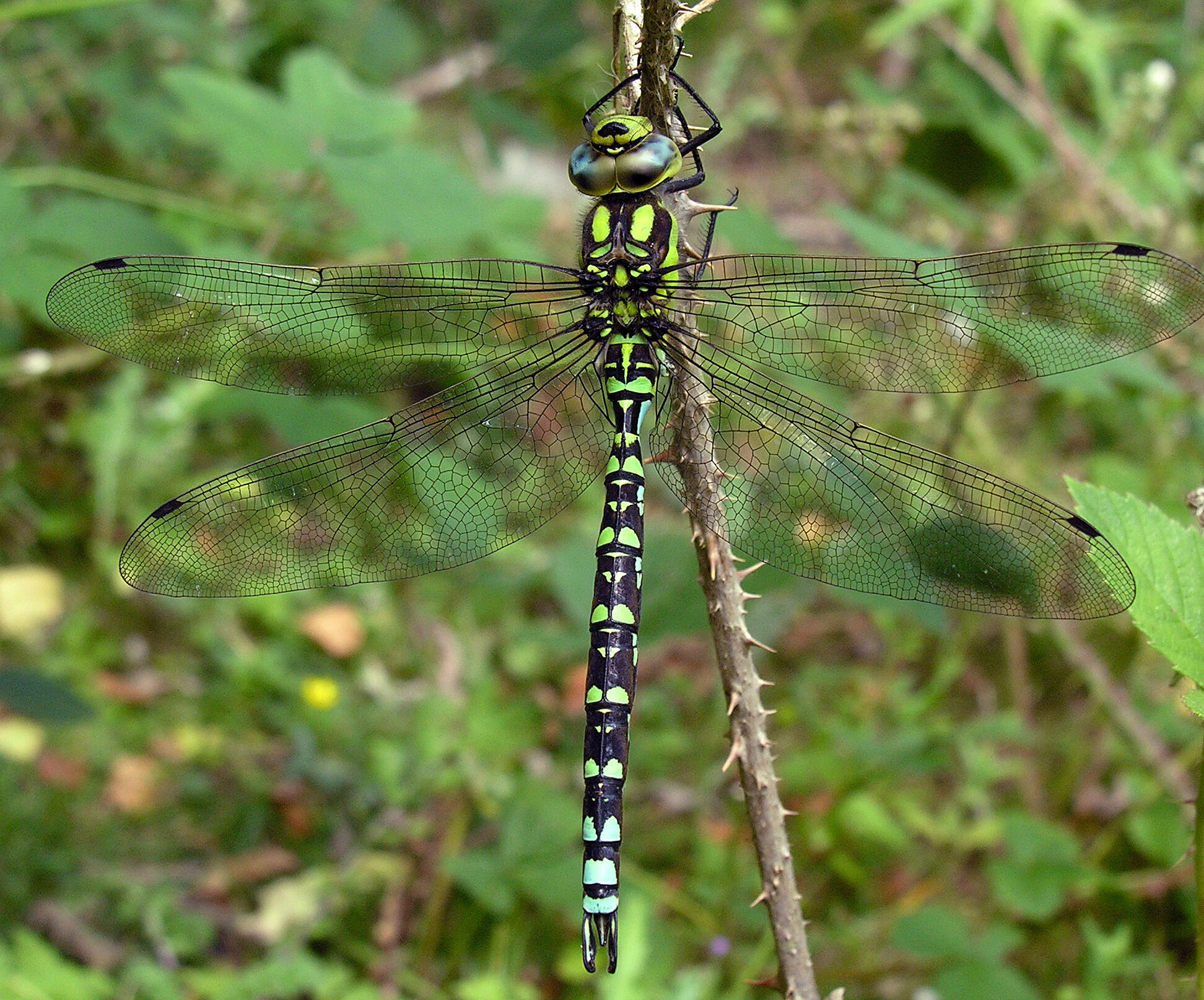
Where can they be found?
Southern Hawkers are common throughout England and Wales, and are slowly spreading into Scotland.
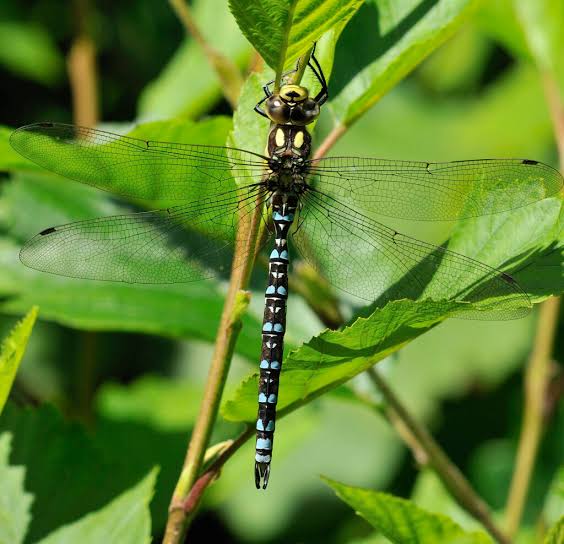
When can you see them?
Adults can be seen in flight from June to October, and occasionally in May and November.
What do they do?
Adult dragonflies feed on various flying insects such as flies, mosquitoes, and midges, catching them mid air using their expert flying skills and incredible eyesight. Nymphs feed on midge and mosquito larvae, which helps to control their populations and stop them from overpopulation certain areas.

